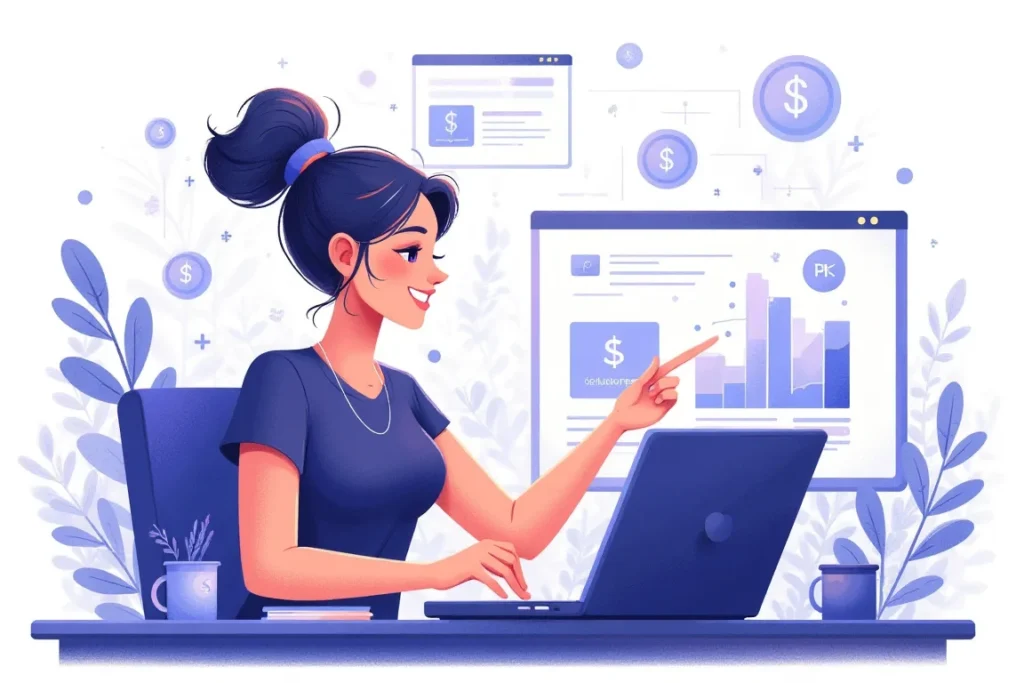Most PLR sellers live in a world of constant frustration. They launch product after product with minimal results, wondering why their competitors seem to effortlessly generate sales while they struggle to make their first dollar. Here’s what they don’t realize: successful PLR entrepreneurs avoid specific mistakes to avoid when selling PLR digital products that keep others trapped in failure. Cross this bridge from struggle to success, and you’ll discover how simple strategic shifts transform your entire PLR business.
Key Takeaways
The biggest mistakes when selling PLR include choosing oversaturated niches, skipping market research, presenting products poorly, failing to add unique value, neglecting community building, and relying on single marketing channels. Here’s what you need to avoid:
- Picking broad, competitive niches instead of specific micro-niches with clear demand
- Launching without validation or proper market research
- Using generic product presentations that fail to showcase value
- Selling PLR products as-is without customization or branding
- Ignoring community building and customer engagement opportunities
- Relying solely on one marketing channel instead of diversifying promotion strategies
- Underpricing products or failing to create compelling bundle offers
- Neglecting mobile optimization and user experience factors
Looking for a shortcut past these common pitfalls? Done for You Digital Products on plrbizhub.com eliminates the guesswork with pre-validated, professionally designed products that convert. Skip months of trial and error and start generating profits from day one with products your customers actually want.
The Fatal Niche Selection Mistake That Kills PLR Businesses
Most new PLR sellers make the same devastating mistake: they go too broad. You see “health and wellness” or “digital marketing” and think you’ve struck gold. Wrong. You’ve just stepped into a battlefield where thousands of established sellers already dominate.
The problem with broad niches isn’t just competition—it’s confusion. When you try to serve everyone, you serve no one effectively. Your messaging becomes generic, your products blend into the noise, and potential customers scroll past without a second glance.
Why Micro-Niches Generate More Profit
Smart PLR sellers focus laser-sharp. Instead of “weight loss,” they target “intermittent fasting for busy professionals.” Instead of “self-improvement,” they create products for “productivity systems for remote workers with ADHD.”
This specificity does three powerful things:
- Reduces competition by 80-90% compared to broad categories
- Increases conversion rates because customers see exactly what they need
- Commands higher prices since you’re solving specific, urgent problems
Research Before You Launch
Never launch a PLR product based on assumptions. Here’s how to validate your niche choice:
Check search volume trends using tools like Google Trends to ensure consistent demand over time, not just temporary spikes that disappear quickly.
Analyze competitor pricing across multiple platforms to understand what customers willingly pay for similar solutions in your chosen niche.
Join Facebook groups and forums where your target audience hangs out. Look for repeatedly asked questions and common frustrations that your PLR products could address.
Study Amazon bestsellers in related categories to identify proven market demand and successful product positioning strategies.
Useful Articles:
The Product Presentation Disaster That Destroys Sales
Your PLR product might be gold, but if it looks like garbage, it sells like garbage. Most sellers slap together basic product descriptions and wonder why nobody buys.
Professional presentation isn’t optional—it’s the difference between profit and failure. Customers can’t touch digital products, so your presentation becomes their entire buying experience.
Visual Elements That Convert
High-quality mockups showcase your digital products in realistic settings. A PDF displayed on a tablet screen or laptop looks infinitely more valuable than a basic file icon.
Sample page screenshots prove your content’s quality without giving away your best material. Choose pages that demonstrate professional formatting and actionable value.
Bundle visualization graphics help customers understand exactly what they’re getting, especially for multi-component packages that include worksheets, templates, and bonuses.
Copy That Sells
Your product descriptions need emotional punch combined with logical benefits. Focus on outcomes, not features.
Bad example: “50-page PDF about social media marketing”
Good example: “Transform your social media from time-waster to profit-generator with step-by-step blueprints that busy entrepreneurs use to build six-figure audiences in 90 days”
Include specific numbers and results wherever possible. “Increase engagement by 300%” hits harder than “boost engagement significantly.”
Address objections before customers think of them. Common concerns include product quality, implementation difficulty, and time investment required.
The Customization Cop-Out That Commoditizes Your Products
Selling PLR products exactly as you bought them is like opening a restaurant and serving frozen dinners. Technically possible, but completely missing the point.
Raw PLR products are ingredients, not finished meals. Your job is cooking them into something customers actually crave.
Smart Customization Strategies
Rebrand everything with your colors, fonts, and logo. This takes 30 minutes but makes your products look completely unique compared to other sellers using the same source material.
Add bonus materials that complement the core content. If you’re selling a fitness PLR package, include meal planning templates or workout tracking sheets you create.
Update examples and case studies to reflect current trends and your target audience’s specific situations. Generic examples feel outdated and irrelevant.
Create companion content like video explanations, audio summaries, or implementation checklists that transform static PDFs into comprehensive learning experiences.
Pricing Customized vs. Generic PLR
Customized PLR products typically sell for 3-5x more than generic versions. A basic PLR ebook might sell for $7-10, while a customized, rebranded version with bonuses easily commands $27-47.
The math is simple: spend 2-3 hours customizing, earn 300-500% more per sale.
Useful Articles:
The Single-Channel Marketing Mistake That Limits Growth
Relying on one marketing channel is like building your business on quicksand. Facebook changes its algorithm, your organic reach disappears. Google updates its ranking factors, your traffic vanishes overnight.
Successful PLR sellers spread their promotional efforts across multiple platforms, creating stability and maximizing reach.
Platform Diversification Strategy
Social media platforms each serve different purposes in your marketing funnel. Instagram works well for visual product previews, LinkedIn connects with professional audiences, and TikTok reaches younger demographics with quick tips.
Email marketing remains the highest ROI channel for digital product sales. Build your list with free PLR samples, then nurture subscribers with valuable tips before introducing paid products.
Content marketing through blogging establishes expertise while attracting organic search traffic. Write about problems your PLR products solve, naturally mentioning your solutions.
Influencer partnerships expand your reach without massive advertising budgets. Many micro-influencers accept free products in exchange for honest reviews and social media mentions.
Cross-Platform Content Repurposing
Create content once, use it everywhere. A single blog post becomes:
- Multiple social media posts with key takeaways
- Email newsletter content for your subscribers
- Video script for YouTube or TikTok
- Podcast interview talking points
- Lead magnet excerpts for list building
This approach maximizes your content investment while maintaining consistent messaging across channels.
The Community Building Blind Spot That Wastes Customer Potential
Most PLR sellers think in transactions, not relationships. They make a sale and move on to finding the next customer. This approach leaves massive money on the table.
Building community around your PLR products creates multiple revenue streams: repeat purchases, word-of-mouth marketing, and premium service opportunities.
Simple Community Building Tactics
Facebook Groups cost nothing to create and maintain. Start a group focused on your niche topic, share valuable tips regularly, and naturally mention your PLR products when relevant.
Email sequences that continue providing value after purchase keep customers engaged. Send implementation tips, bonus resources, and updates about new products to previous buyers.
User-generated content campaigns encourage customers to share results from using your PLR products. Their success stories become powerful social proof for future sales.
Exclusive member benefits make customers feel special while encouraging repeat purchases. Early access to new products or member-only bonuses increase perceived value.
The Lifetime Value Advantage
Acquiring new customers costs 5-7x more than selling to existing ones. PLR sellers who build communities typically see:
- 40-60% higher customer lifetime value
- 25-30% more referral sales
- 50-80% lower customer acquisition costs over time
Community building takes effort upfront but pays dividends for years.
Useful Articles:
The Pricing Psychology Errors That Leave Money Behind
Pricing PLR products seems straightforward until you realize how many psychological factors influence buying decisions. Price too low, customers question quality. Price too high, they seek alternatives.
Most sellers either copy competitor pricing blindly or pick random numbers that feel right. Both approaches miss opportunities for optimization.
Value-Based Pricing Principles
Anchor high-value outcomes in your pricing conversations. If your PLR productivity system saves customers 5 hours weekly, that’s worth $500+ monthly for someone earning $25/hour.
Bundle complementary products to increase average order value. Three related PLR products sold separately might generate $45 total, while a bundle could easily sell for $67-97.
Create pricing tiers that guide customers toward your preferred option. Basic ($27), Premium ($47), and Complete ($97) options make the middle choice look reasonable while the high option enhances perceived value.
Psychological Pricing Techniques
Charm pricing (ending in 7 or 9) consistently outperforms round numbers for digital products under $100.
Scarcity elements like limited-time bonuses or exclusive access create urgency without seeming manipulative.
Social proof integration through customer counts (“Join 1,247+ entrepreneurs who’ve transformed their productivity”) validates pricing decisions.
The Mobile Optimization Oversight That Costs Conversions
Over 60% of digital product purchases happen on mobile devices, yet many PLR sellers design their stores and products for desktop users only.
Mobile optimization isn’t just about responsive design—it affects loading speeds, checkout processes, and even how customers consume your digital products.
Mobile-First Product Design
Ensure PLR PDFs are mobile-friendly with readable fonts, appropriate sizing, and logical flow that works on small screens.
Optimize product images for fast loading without sacrificing quality. Slow-loading product pages kill mobile conversions instantly.
Simplify checkout processes by minimizing form fields and offering one-click payment options like Apple Pay or Google Pay.
Test everything on multiple devices before launching. What looks perfect on your laptop might be unreadable on a smartphone.
Mobile Marketing Considerations
Social media content needs to work perfectly on mobile since most users access these platforms through apps.
Email campaigns must render correctly across different email apps and screen sizes.
Landing pages should load in under 3 seconds on mobile connections to prevent abandonment.
The Analytics Avoidance That Keeps You Guessing
Many PLR sellers launch products, hope for the best, and wonder why some items sell while others flop. Without proper tracking, you’re flying blind through decisions that make or break your business.
Analytics reveal which marketing efforts generate sales, which products your audience prefers, and where you’re losing potential customers in your sales funnel.
Essential Metrics to Track
Conversion rates by traffic source show which marketing channels deliver the best customers, not just the most visitors.
Customer acquisition costs help determine if your marketing spend generates positive returns or slowly bleeds your business dry.
Product performance data reveals which PLR items resonate with your audience and which need improvement or discontinuation.
Email engagement rates indicate whether your list building efforts attract genuinely interested subscribers or just freebie seekers.
Making Data-Driven Decisions
Track everything for at least 90 days before making major changes. Short-term fluctuations often mislead sellers into abandoning strategies that would work with more time.
A/B test product descriptions, pricing, and marketing messages to continuously improve performance based on real customer behavior, not assumptions.
Set up automated reports that deliver key metrics weekly so you stay informed without getting overwhelmed by data.
The Follow-Up Failure That Wastes Warm Prospects
Your marketing efforts drive traffic to your PLR products. Some visitors buy immediately, but most leave without purchasing. What happens next often determines your business success or failure.
Most sellers focus entirely on attracting new visitors while ignoring the 95-98% who didn’t buy during their first visit. This approach wastes enormous potential.
Strategic Follow-Up Systems
Retargeting campaigns keep your products visible to previous visitors as they browse other websites and social media platforms.
Email capture strategies collect contact information from interested prospects who aren’t ready to buy immediately.
Lead magnets like free PLR samples or valuable checklists provide reasons for visitors to share their email addresses.
Automated email sequences nurture prospects over weeks or months, building trust and addressing objections that prevent immediate purchases.
The Psychology of Multiple Touchpoints
Research shows most customers need 7-12 touchpoints before making purchasing decisions for products they’ve never heard of before.
PLR sellers who implement systematic follow-up typically see:
- 25-40% higher overall conversion rates
- 60-80% more revenue from the same traffic
- Stronger customer relationships and repeat sales
The investment in follow-up systems pays for itself quickly through improved conversions from existing traffic.
The Quality Control Crisis That Destroys Reputation
Not all PLR products are created equal. Some providers deliver high-quality, well-researched content while others pump out generic, poorly written materials that damage your reputation.
Selling low-quality PLR products might generate short-term sales, but it destroys customer trust and long-term business potential.
Evaluating PLR Quality
Check for originality by running content through plagiarism checkers. Some PLR providers recycle the same materials across multiple products.
Assess writing quality by reading samples carefully. Look for grammatical errors, logical flow issues, and outdated information that needs updates.
Verify claims and statistics mentioned in PLR content. Inaccurate information reflects poorly on your business even if you didn’t write it originally.
Test all included resources like worksheets, templates, and bonus materials to ensure they work properly and provide genuine value.
Building Quality Standards
Establish minimum quality criteria for PLR products you’re willing to sell. This might include:
- Professional formatting and design
- Accurate, well-researched information
- Actionable advice customers can implement
- Current examples and references
- Error-free grammar and spelling
Higher quality standards mean fewer products pass your filter, but those you do sell generate better reviews, more referrals, and stronger customer relationships.
Avoiding these mistakes to avoid when selling PLR digital products transforms struggling sellers into profitable entrepreneurs. Each mistake you eliminate moves you closer to consistent PLR success, while each one you ignore keeps you trapped in the cycle of failed launches and disappointing results.




